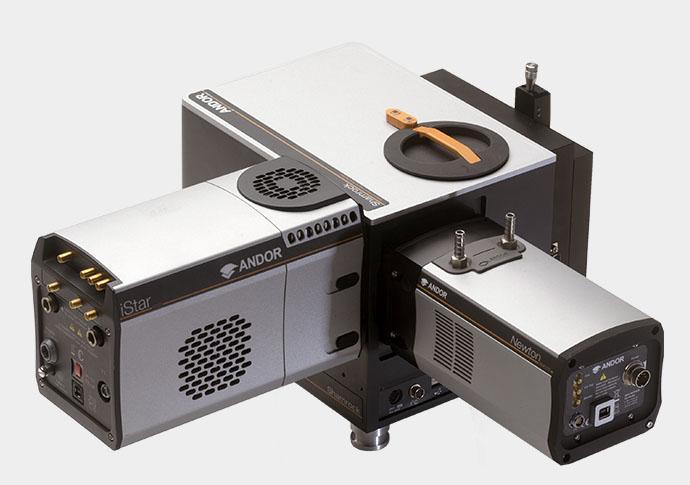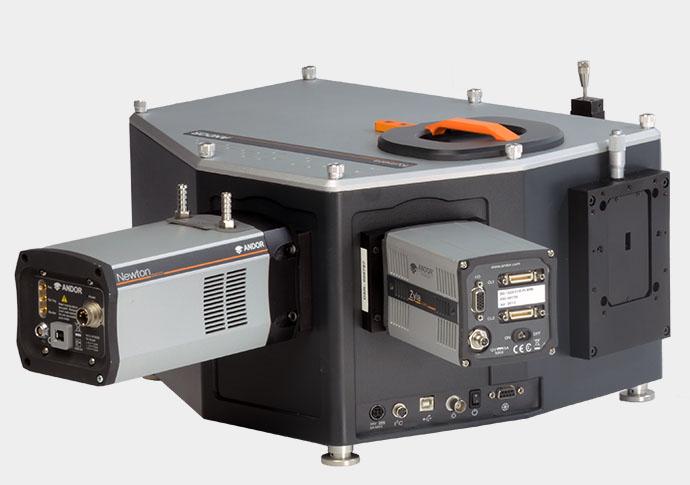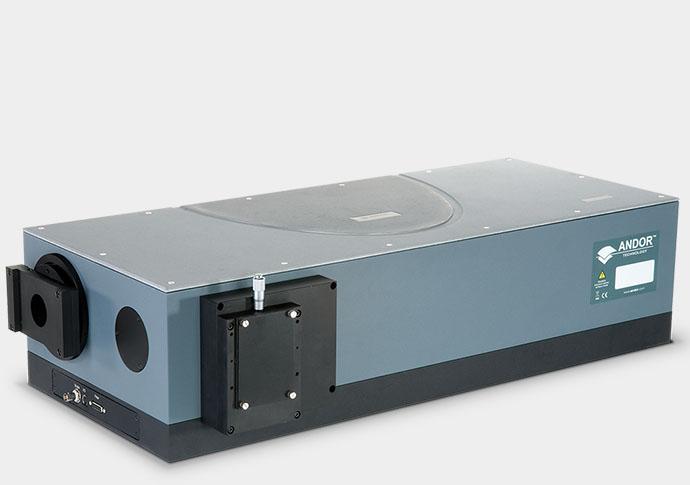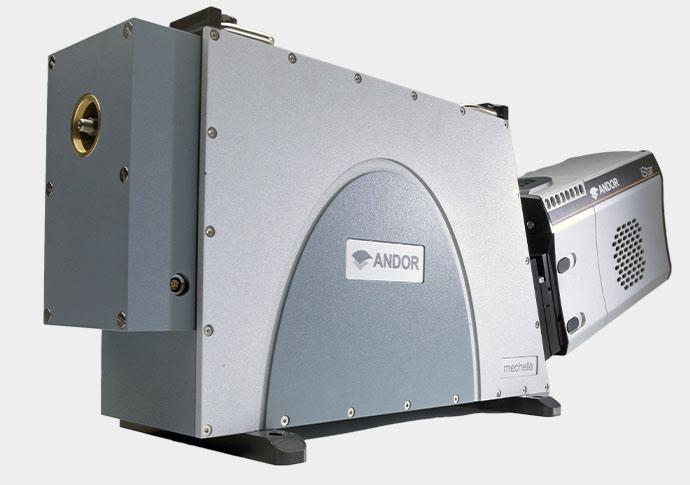Light coupling input/outputs
- Fibre-optics, X-Y adjustable couplers and F/# matcher
- Sample chamber
- Motorised & manual slits
- Filter wheels
Andor’s range of highly versatile spectrographs provide high resolution, high throughput, high modularity, ease of use from the UV to the NIR and SWIR, from macro- to nano-scale, with fluxes down to single photon and time-resolution down to nanosecond. Andor’s spectrograph technology is based on Czerny-Turner, Echelle or Transmission optical designs.
Spectrograph features include:
Andor’s spectrograph family is based on Czerny-Turner, Echelle or Transmission optical designs, and offers a range of highly configurable or highly specialised platforms to best suit your experimental requirements.





Select from the options below to find the Spectrograph platform that best meets your needs.
Spectral Resolution
Throughput
Simultaneous bandpass
Adaptable to large range of setups, high configurability, in-field upgradeable
High sensitivity, high speed, high dynamic range detection from the UV to the NIR and SWIR.

Solis Acquisition Software - A 32-bit and fully 64-bit enabled application for Windows (8, 8.1 and 10) offering rich functionality for data acquisition and processing, as well as Andor cameras, spectrograph and motorized accessories simultaneous control.
Find out moreSoftware Development Kit - A SDK that allows you to control the Andor range of spectrographs from your own application. Compatible as 32-bit and 64-bit libraries for Windows (8, 8.1 and 10). Compatible with C/C++, C#, VB.NET and LabVIEW for Windows/Linux.
Find out moreµ-Manager for Micro-spectroscopy - Integrated modular micro-spectroscopy setup control popular with the Life Science community. All market leading motorized microscope and accessories seamlessly controlled and maintained. Integrated sequence builder & macro interfaces for complex experiments building.
Find out more Download plug-in